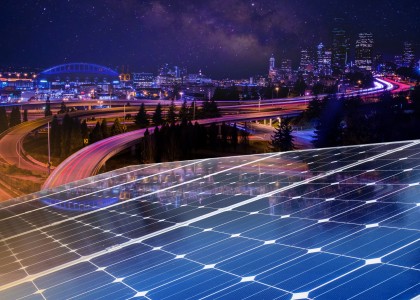This week has been an active one for energy efficiency on Capitol Hill. Yesterday Senate Energy and Natural Resources Committee chair Senator Lisa Murkowski (R-AK) and ranking member Senator Maria Cantwell (D-WA) released a draft energy bill, with one out of the four titles focusing on energy efficiency. Also yesterday, the Energy and Power Subcommittee of the House Energy and Commerce Committee approved an energy bill, including several energy efficiency provisions. And the day before, the Senate Finance Committee approved extensions of a variety of tax incentives, including three that address energy efficiency. These actions are only early steps in the process of enacting legislation, but progress on three bills in one week is certainly notable.
Senate and House release bipartisan energy bills
In terms of specifics, the Senate energy bill incorporates many of the provisions in the bipartisan Energy Savings and Industrial Competiveness Act introduced by Senators Portman (R-OH) and Shaheen (D-NH). Particularly notable is a provision to assist states and voluntary code organizations to improve building energy codes. Other provisions added to the committee bill include sections to encourage smart buildings and smart manufacturing that ACEEE helped to develop, a pilot grant program for non-profit organizations including religious institutions, improvements to programs that use energy service companies to finance energy efficiency improvements in federal facilities, and reauthorization and updating of the federal Weatherization Assistance Program and State Energy Program. On the other hand, we are troubled that the bill does not include a provision from the Portman-Shaheen bill, the SAVE Act, which would encourage recognition of energy savings when efficient homes are financed with mortgages.
The energy efficiency portion of the House bill has many fewer energy efficiency provisions than the Senate bill. It includes provisions on energy-saving information technologies, energy-efficient data centers, coordination of energy retrofitting assistance for schools, and reauthorization of the Industrial Assessment Center program that are also in the Senate bill. In addition, the House bill includes a provision that is not in the Senate bill to add information to appliance Energy Guide labels for products that have smart grid capabilities. Also notable is the fact that the House bill only includes provisions that are bipartisan—we were concerned that some provisions might be included that would hinder efficiency improvements in building codes and equipment efficiency standards.
Despite all the activity this week, the path to law for the energy bill is uncertain. The Senate Energy Committee will consider amendments to its bill next week, and the full House Energy and Commerce Committee will likely consider amendments in September. The House committee leadership has indicated that a variety of partisan issues will be considered then. In both the House and Senate there is a risk that partisan amendments to the bills on efficiency or other issues will endanger their support, or that the bills will simply get lost amidst other issues. But the committees have defied political considerations to keep a bipartisan process so far.
Bill to extend tax incentives includes energy efficiency
The Senate Finance Committee bill extends a variety of energy efficiency tax incentives until the end of 2016. Most of the efficiency tax incentives expired at the end of 2014, and are described here. Included are new home, commercial building, and residential upgrade incentives. The bill, if enacted into law, will cover efficiency investments made in 2015 and 2016. For the most part the bill just changes the expiration dates, but it does include a number of other changes. On home upgrades, it updates and improves the qualification levels for residential window, water heater, boiler, cool roof, and wood stove incentives, and expands the credit to cover labor costs. The bill also modifies the baseline for calculating commercial building incentives; and permits tribal governments and non-profit organizations to transfer eligibility for the incentive to the person designing the property, since the incentive is not useful to organizations that do not pay taxes. Details on what the committee did can be found on pages 6-7 here.
For the tax incentives bill, the House has indicated it is in no hurry and will not work on a bill until fall. It is unclear whether a tax incentive bill will ultimately be voted on by the full Senate and House, or whether tax incentive provisions will be added to some other major piece of legislation such as an appropriations continuing resolution or omnibus year-end package. It is also possible the House will do something different than the Senate; last year, the House passed a simple extension without any changes, but the committee chairman has also talked about seeking more substantial tax changes such as a “down payment on tax reform” this fall.
Outlook: cloudy but possible sunshine
While it’s too early to know what the final results could be, this week’s promising actions begin to fill in the possible contours of energy efficiency legislation for this year. But we are early in the process and there are many twists and turns in the legislative path ahead. ACEEE, and many of our allies, will be working hard to get the best possible legislation for energy efficiency across the finish line.



